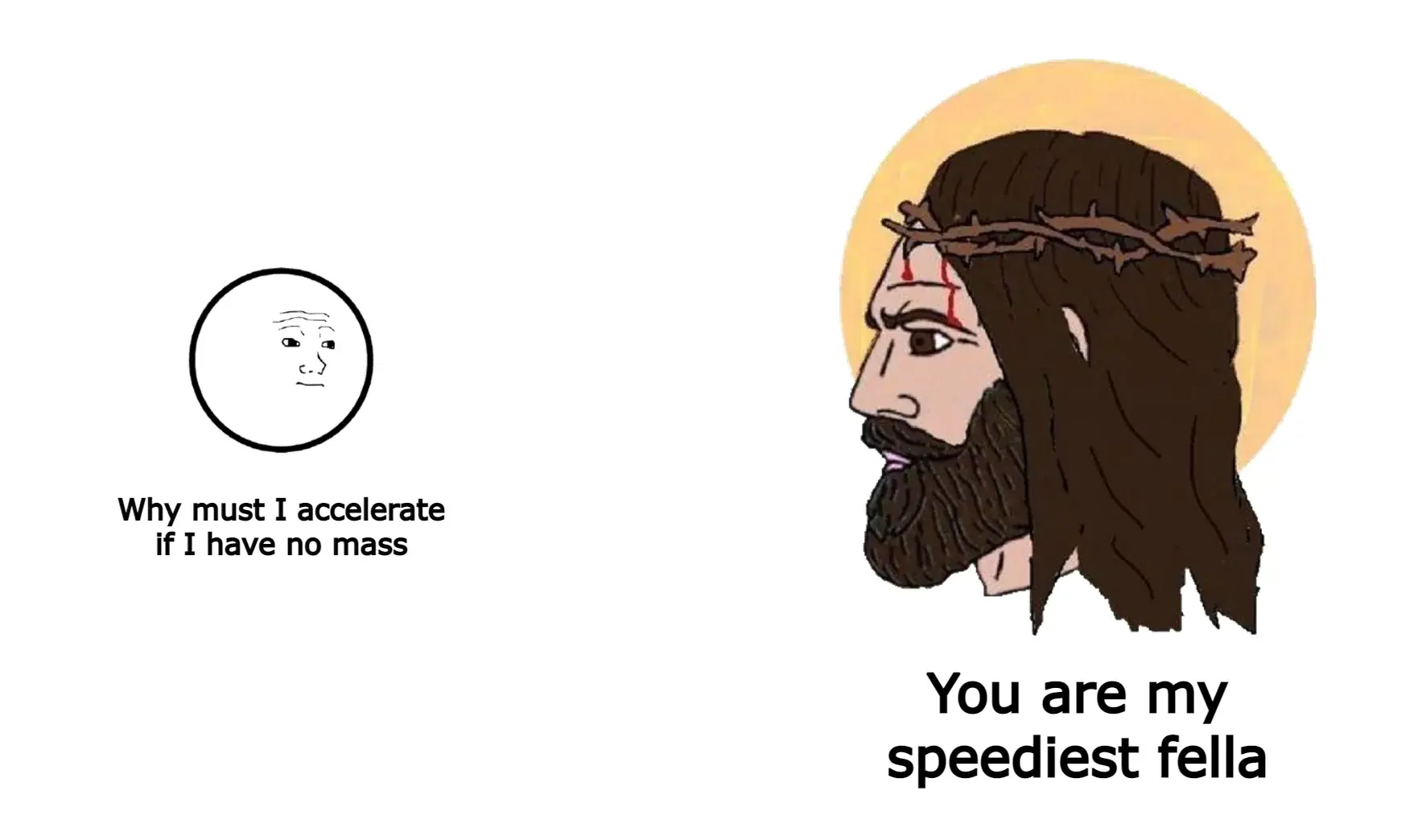this post was submitted on 19 Nov 2023
347 points (93.3% liked)
Science Memes
10885 readers
3914 users here now
Welcome to c/science_memes @ Mander.xyz!
A place for majestic STEMLORD peacocking, as well as memes about the realities of working in a lab.

Rules
- Don't throw mud. Behave like an intellectual and remember the human.
- Keep it rooted (on topic).
- No spam.
- Infographics welcome, get schooled.
This is a science community. We use the Dawkins definition of meme.
Research Committee
Other Mander Communities
Science and Research
Biology and Life Sciences
- [email protected]
- [email protected]
- [email protected]
- [email protected]
- [email protected]
- [email protected]
- [email protected]
- [email protected]
- [email protected]
- [email protected]
- [email protected]
- [email protected]
- [email protected]
- [email protected]
- [email protected]
- [email protected]
- [email protected]
- [email protected]
- [email protected]
- [email protected]
- [email protected]
- [email protected]
- [email protected]
- [email protected]
- !reptiles and [email protected]
Physical Sciences
- [email protected]
- [email protected]
- [email protected]
- [email protected]
- [email protected]
- [email protected]
- [email protected]
- [email protected]
- [email protected]
Humanities and Social Sciences
Practical and Applied Sciences
- !exercise-and [email protected]
- [email protected]
- !self [email protected]
- [email protected]
- [email protected]
- [email protected]
Memes
Miscellaneous
founded 2 years ago
MODERATORS
you are viewing a single comment's thread
view the rest of the comments
view the rest of the comments

Not really no. Special relativity explains the relationship between space and time. General relativity expands on this to account for gravitation.
One of the postulates (i.e. assumptions) of relativity is that the speed of light in vacuum is the same for all observers. But the theory doesn't actually require any particular value for c, it only needs it to be constant. And it doesn't explain the behavior of light in a medium at all.
In fact, relativity doesn't explain the mechanism by which light interacts at all, that is the domain of Quantum Electro Dynamics.
Wow that is so interesting. So am I understanding that relativity explains space, time and gravity’s interactions with one another, while quantum science explains interactions with much smaller objects like matter?
the speed of light expressed in units of distance per time, is a dimensionful quantity so it probably doesn’t mean anything to say some theory does or does not predict a value for it. The value is entirely determined by how big you choose your yardsticks and sundials to be, which is arbitrary convention.
It is only meaningful to talk about theoretical predictions of the values of constants if they are dimensionless, like the fine structure constant.
However relativity does suggest as a natural point of view that space and time are just orthogonal directions in a unified spacetime. In this point of view, relativity gives you the option of measuring your timelike and spacelike coordinates with the same yardstick (which you may still choose arbitrarily). And then relativity does predict its value. It’s 1. No units.